how to change bike pedals
Aug 21, 2015 / Pedal Service
This article will discuss the correct procedure for installing and removing bike pedals.
1
Getting Started
What Tools do I need?
- Wrench:
- Pedal Wrench: PW-3, PW-4, PW-5, HCW-16.3
NOTE: Never use a cone wrench as a pedal wrench! - Hex wrench (some models): HT-6, HT-8
- Pedal Wrench: PW-3, PW-4, PW-5, HCW-16.3
- Grease for threads:
- PPL-1 Polylube or ASC-1 Anti-Seize Compound
- Light lubricant for pivot points and body springs: CL-1 Chain Lube
It is often necessary to remove pedals to pack a bike for shipment. It is also sometimes necessary to remove the pedals for replacement and to service the pedal bearings. It is important to remember that pedal threads are different from left side and right side. The right side pedal has a right-hand thread (removes counterclockwise, installs clockwise). The left side pedal has a left-hand thread (removes clockwise, installs counterclockwise). Many pedals are stamped "L" and "R" for left and right. Additionally, the thread will appear to slope up toward its tightening direction. Left hand threads slope up to the left, while right hand threads slope up to the right, as seen below.
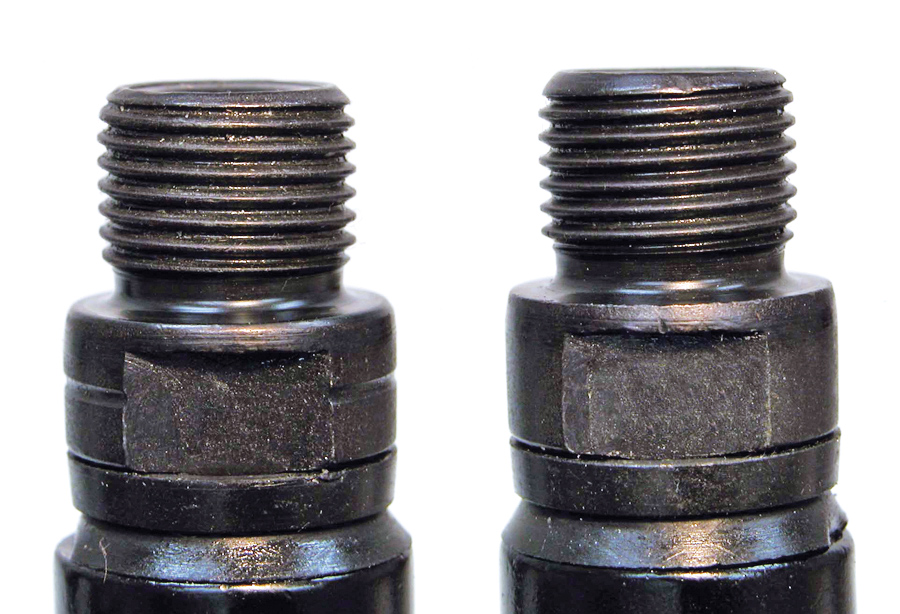
2
Pedal Removal
- Mount bike in repair stand and shift chain to largest chainring. This helps protect against cuts from chainring teeth.
- Rotate bike until right pedal is easily accessed.
- Try different wrench positions until wrench and crank arm form an angle of 90 degrees or less, as seen below. Correct mechanical advantage is critical on pedals, which are often overly tight.
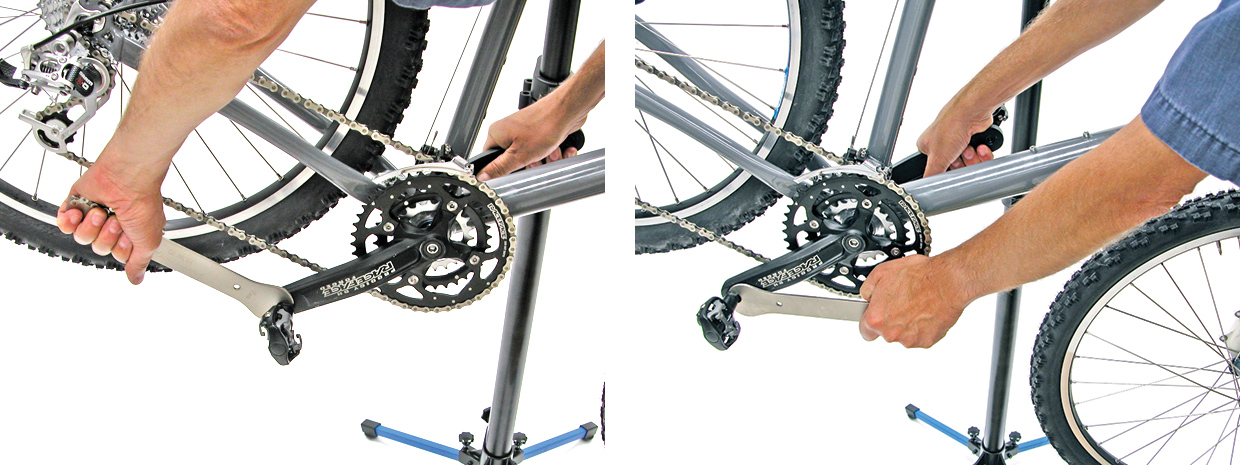
- If possible, grab opposite crank for second lever. Turn pedal wrench counter-clockwise to remove right pedal or turn crank so the pedal is pedaling forward. Use care not to abrade skin. Continue to turn wrench counter-clockwise and remove pedal completely from crank.
- Rotate bike as necessary until left pedal is easily accessed.
- Position pedal wrench for good mechanical advantage onto left pedal, and grab right crank for second lever.
- Turn pedal wrench clock-wise to remove left pedal or turn crank so the pedal is pedaling forward. Remove left pedal completely from crank.
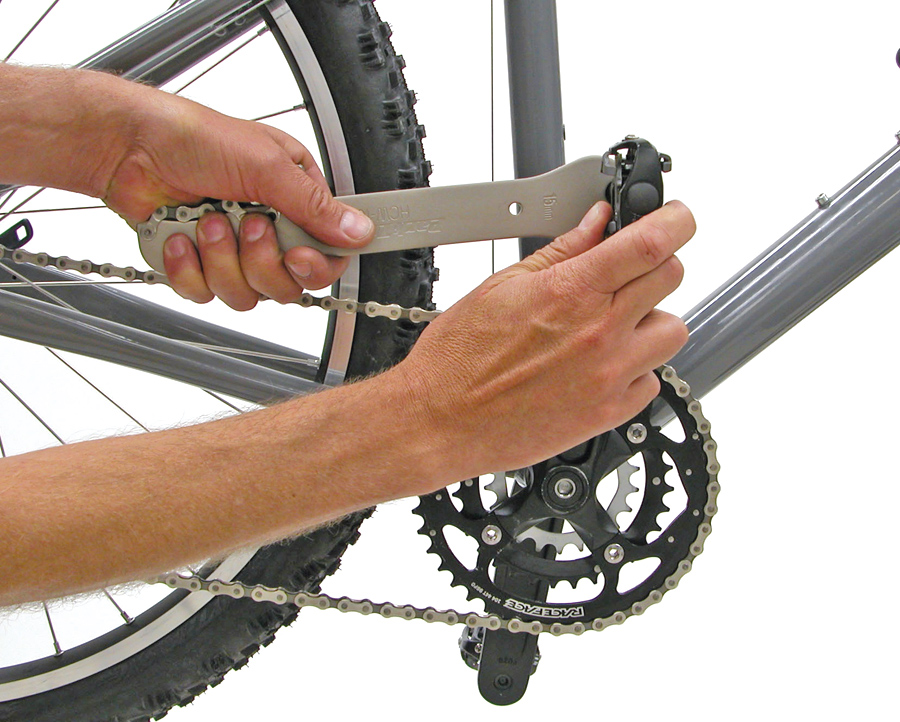
Some model and makes of pedal do not use a pedal wrench flat. These pedals will typically have a 8mm hex fitting in the back side of the pedal thread. Use an 8mm hex wrench in this fitting to remove and secure the pedals. When turning the pedals, keep in mind the wrench is on the back side of the pedal. The pedal thread direction has not changed, but the appearance of the wrench turning "clockwise" or "counter-clockwise" will appear different. View the wrench from the orientation of the pedals, standing to the right side of the bike for the right pedal, and the left side of the bike for the left pedal. Turn the wrench accordingly.
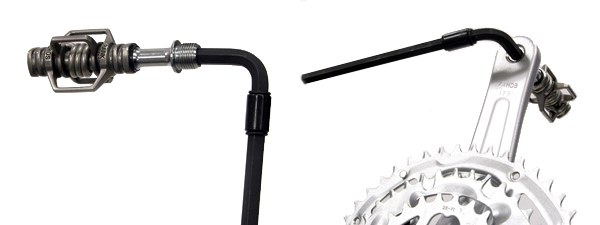
Rotate the bike as necessary to access the inside of the crank. Select an position that will give you good mechanical advantage and secure the pedals.
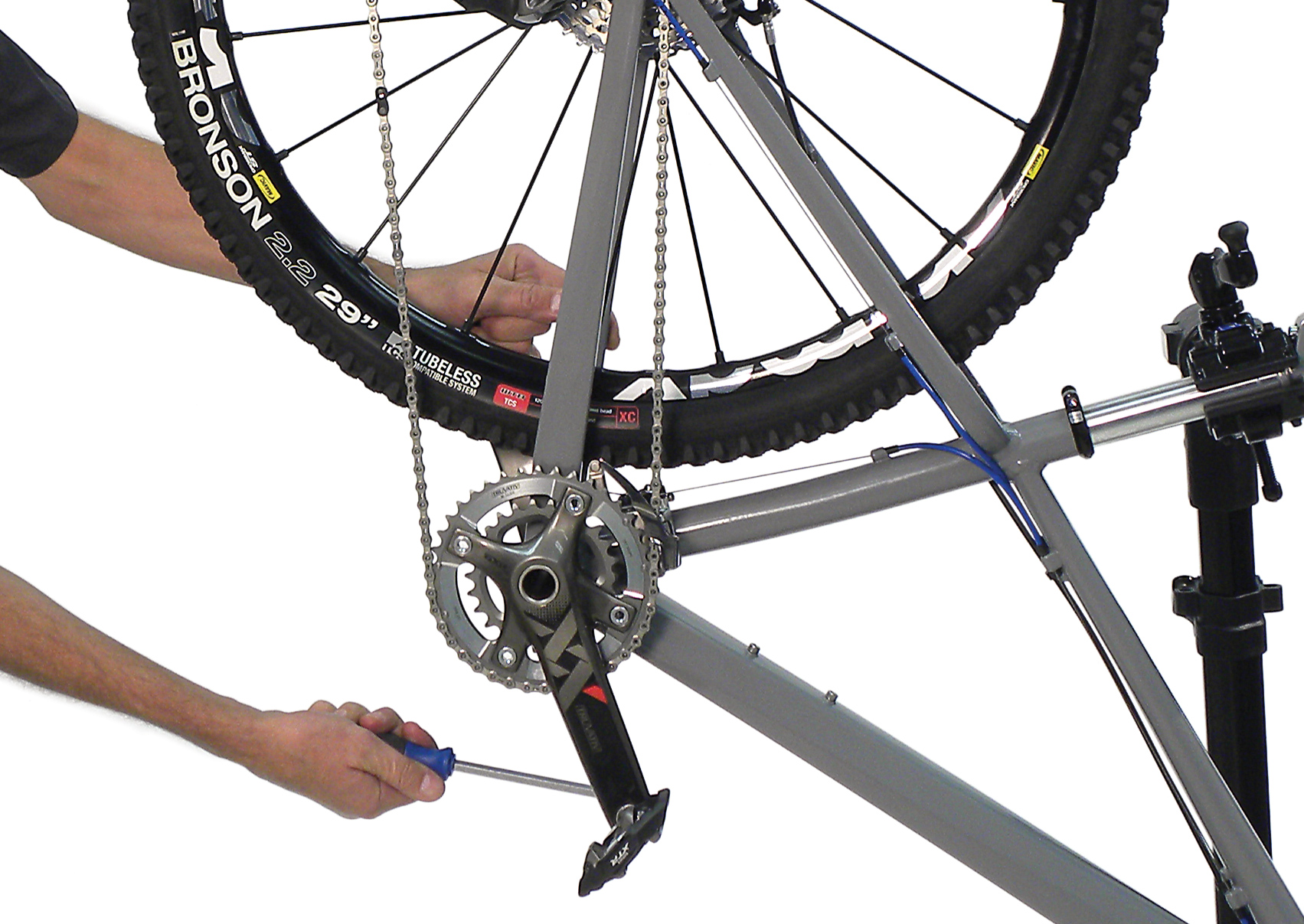
3
Pedal Installation
Begin by identifying the right and left pedals. Look for "L" and "R" marking on axle or wrench flats. If no "L" and "R" marking are seen, use pedal thread direction to identify pedals. Left threaded pedals (threads sloping upward to the left) go to left crank. Right threaded pedals (threads sloping upward to the right) go to right crank. See image at top if in doubt.
- Heavily grease threads of both pedals.
- Using fingers on wrench flats, thread right side pedal into right crank. Use wrench to snug pedal.
- Position wrench on flats for good mechanical advantage. Hold wrench with one hand while holding opposite crank with other. (Pedal the bike backward to install both left and right.)
- Using opposite arm as second lever, tighten pedal. Repeat process for left pedal, but threading pedal counter-clockwise to install. Typical torque for pedal thread is about 360 inch-pounds. With a foot long wrench, that is about 30 pounds of effort.
If pedal is difficult to thread into arm, or if the threads in the crank are damaged, there may be some repair possible by chasing them with a tap. For 9/16″ x 20 tpi pedals, use tap set TAP-6. For 1/2″ x 20 tpi pedals, use tap set TAP-3. Taps will align damaged threads, but will not restore metal that is simply removed. If no threads are left, have a professional mechanic install a pedal bushing kit.
4
Pedal Bearings and Hardware
Pedals bearing may be serviceable depending upon the manufacturer and model of pedal. Some pedals use adjustable cup type ball bearing system, and may be cleaned, greased, and adjusted. Service tools are proprietary to each brand. Some pedal models are not intended to be serviced, and are simply ridden until the pedal wears out. Pedal bearing service is typically best left to professional mechanics.
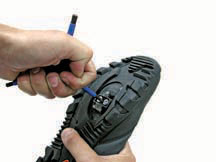
Pedal bodies often are made with small screws and bolts. These screws hold together the cage and mounting plates. Occasionally check that these fasteners and the cleats on your riding shoes are tight. Additionally, lubricate the pivot points on clipless type pedal systems.
how to change bike pedals
Source: https://www.parktool.com/blog/repair-help/pedal-installation-and-removal
Posted by: leetersibithe1997.blogspot.com

0 Response to "how to change bike pedals"
Post a Comment